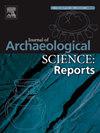Provenance study on metal materials of the bronze weapons foundry site (2019 field session) in the ancient capital of the Zhu State, Shandong, China
IF 1.5
2区 历史学
0 ARCHAEOLOGY
引用次数: 0
Abstract
A large number of bronze-casting relics of the Warring States period were discovered for the first time at the ruins of Zhu State Ancient City, Shandong, Eastern China. The microstructure, composition, and lead isotope ratio of slags and bronzes were examined. The results reveal that the slags are smelting slags, and the bronzes predominantly consist of copper-tin–lead alloys. Three types of lead materials were employed in the casting of weapons by the Zhu State: the first type likely originated from Hunan, while the other unique types could be local mineral materials from Shandong. With the growing demand for casting weapons and the constraints on metal resource circulation among various countries, the Zhu State was compelled to exploit a new type of lead material produced in neighboring regions after the early Warring States period. There was a significant shift in the lead materials used in Shandong from the middle Warring States period, transitioning from external input to the combination of the lead materials from Chu and local sources. This study provides new evidence for exploring the source, circulation, and relationship with neighboring countries concerning the mineral materials used in the production of bronzes in the Shandong area during the Eastern Zhou period.
中国山东邾国古都青铜兵器铸造遗址(2019年现场会)金属材料来源研究
在中国东部山东诸国古城遗址首次发现了大量战国时期的青铜铸造遗迹。研究了炉渣和青铜器的微观结构、成分和铅同位素比值。结果表明,炉渣为冶炼炉渣,青铜器主要由铜锡铅合金组成。朱国在铸造兵器时使用了三种铅材料:第一种可能来自湖南,其他几种可能是山东当地的矿物材料。随着铸造兵器需求的增长,以及各国金属资源流通的限制,战国早期以后,诸侯国不得不开采周边地区出产的新型铅材料。从战国中期开始,山东地区使用的铅材发生了重大转变,由外来铅材输入过渡到楚国铅材与本地铅材相结合。本研究为探索东周时期山东地区青铜器生产所用矿料的来源、流通及与周边国家的关系提供了新的证据。
本文章由计算机程序翻译,如有差异,请以英文原文为准。
求助全文
约1分钟内获得全文
求助全文
来源期刊

Journal of Archaeological Science-Reports
ARCHAEOLOGY-
CiteScore
3.10
自引率
12.50%
发文量
405
期刊介绍:
Journal of Archaeological Science: Reports is aimed at archaeologists and scientists engaged with the application of scientific techniques and methodologies to all areas of archaeology. The journal focuses on the results of the application of scientific methods to archaeological problems and debates. It will provide a forum for reviews and scientific debate of issues in scientific archaeology and their impact in the wider subject. Journal of Archaeological Science: Reports will publish papers of excellent archaeological science, with regional or wider interest. This will include case studies, reviews and short papers where an established scientific technique sheds light on archaeological questions and debates.
 求助内容:
求助内容: 应助结果提醒方式:
应助结果提醒方式:


